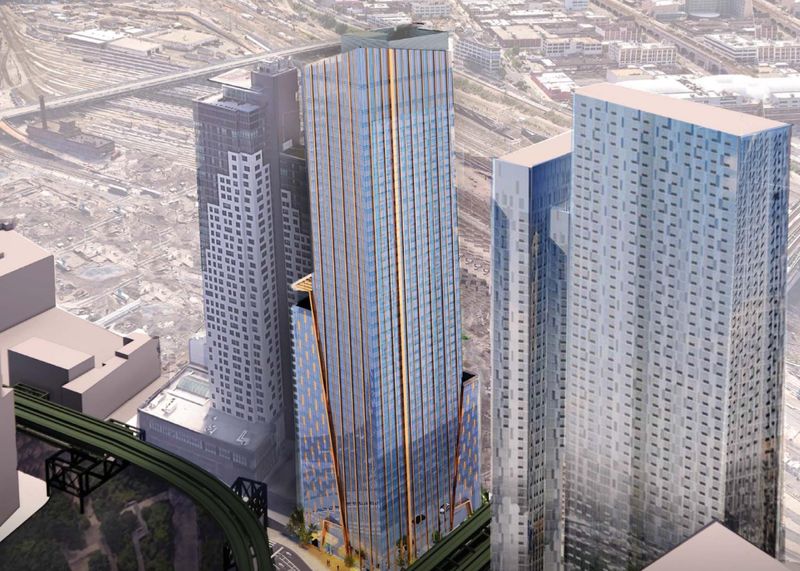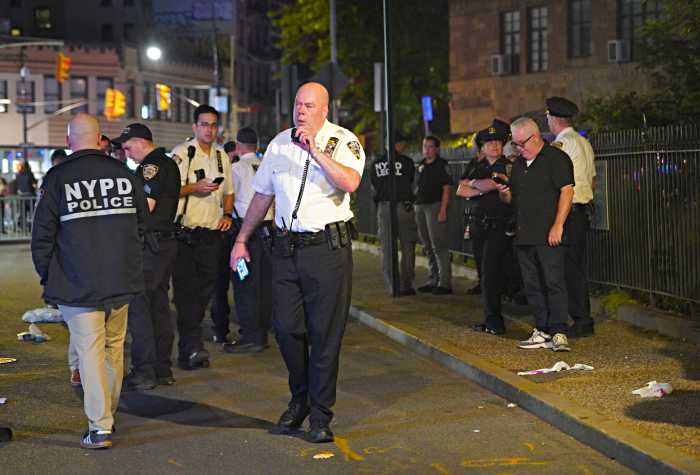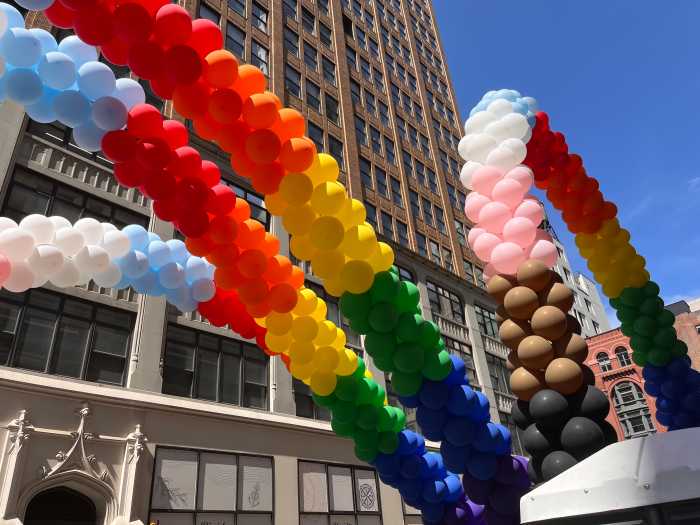(cont. from leadstory page 1)
The world may not have stood still on Tues., Sept. 11, soon after 9:15 a.m., the nation, the New York City and all of Queens stood stock-still in horror and disbelief in the wake of the greatest domestic tragedy in American history.
Kamikaze-style crashes by two commercial jetliners into the World Trade Center triggered explosions that led to the collapse and destruction of the two 110-story towers in downtown Manhattan.
With smoke and debris enveloping Lower Manhattan as far north as Greenwich Village and beyond, .Mayor Rudolph Giuliani said the death toll probably would not be known for at least a day, adding it would be "more than any of us can bear."
Airports and mass transportation into and out of Manhattan were shut down in the morning and all bridges and tunnels to Manhattan were closed.
Pennsylvania Station, hub of Long Island Rail Road service to Queens, was shut down briefly. Limited service to Long Island resumed at 2 p.m. Grand Central Terminal also was closed briefly.
City officials called off the Democratic and Republican primary elections for Democratic and Republican candidates for mayor, City Council, borough presidents and other offices.
Subways resumed service and bridges were reopened later in the day while the Long Island Expressway westbound remained closed. All but emergency vehicles were banned from entering Manhattan. Meanwhile, Queens bus service, including private bus lines, were operational all day.
Gov. George E. Pataki called out the national Guard, and Queens hospitals were pressed into service. The governor also issued a statement at noon.
"Todays horrific incident at the World Trade Centerwhich appears to be part of a coordinated terrorist attackis a tragedy of unspeakable proportions and a crime against all Americans and all decent people around the world.
"I have been in contact with President Bush and Mayor Giuliani to ensure that the appropriate emergency response is as effective and well-coordinated as possible. As a precautionary measure, we have closed all non-emergency-related State government offices in New York City."
St. Johns University canceled all classes for the day because of the tragedies. Public schools also shut down and will stay shut down at least through Wednesday.
Here is a random sample of reactions by Queens residents and Queens-connected persons.
Stephen Sohmer, who works on the floor of the New York Stock Exchange on Broad St. in the Financial District, told The Queens Courier that 3,000 people were held at the exchange because of the smoke from the World Trade Center.
Police assigned to the area, Sohmer said, escorted people from of the exchange, and some of them took a ferry from the South Sea Seaport to Glen Cove, a regularly scheduled service. This helped evacuate people off Manhattan island, he said.
During and after the World Trade Center collapse, Sally Martin-Fisher, Community Board 13 district manager, was in Queens Borough Hall for a Dept. of Transportation budget meeting with Community Board 13 Chairperson Richard Hellenbrecht, who just retired from the New York Port Authority where he had worked on the 71 floor of one of the Trade Center towers.
"It was wild," said Martin-Fisher. "People were crying because they had family there (at the World Trade Center). I wanted to get out of Borough Hall. And, strange thing, wanted to get back to my staff. Tears were rolling down my cheeks as I was driving from the meeting. Relatives around the country were calling to see if I am safe."
As for his reaction, Richard Hellenbrecht said, "I was fearful for my friends. I was concerned for their families. I have no words to express my devastation."
He pointed out that "I would have been there had I not retired. I was there for the last explosion. It takes a long time to walk down 70 floors."
Jackie Arrington, a Citicorp vice president, who was working in the 51-story Citicorp building in Long Island City, said at 11 a.m. the building was evacuated.
"Everything was eerie quiet. We were stunned, standing and staring. There was very little conversation. From my window, I watched the second [World Trade Center] tower go down. My heart goes out to the people. They announced all retired police personnel to come to Staten Island to report. There was no threat, but we wanted people to be able to go home to their loved ones."
Robert Stridiron of Kew Gardens, a building superintendent who doubles as a Courier freelance photographer, described how he witnessed the destruction of the World Trade Center towers:
"One of the pilots from Jet Blue Airlines told me a plane had just crashed into the World Trade Center.. I got Kevin [Conway] and we got into a car and started driving toward Manhattan on the Brooklyn-Queens Expressway.
"While driving, we witnessed the first tower starting to collapse. We pulled over and I started taking pictures. We witnessed the second tower collapse. There were no cars on the BQE because the road was closed to traffic. We didnt hear anything when the second tower collapsed."
Stridiron noted that he was member of a volunteer ambulance corps in 1987 when it pulled up to the World Trade Center 12 minutes after that bombing. He took out his camera and starting taking pictures.
Kevin Conway, also a Kew Gardens building superintendent, who was with Stridiron, said, "I could see the first tower go down from our car on the road. We stopped on a rise on the BQE, both of us silent, waiting for the second tower to go down. We saw it go down, but heard nothing."
A high-ranking police officer said the New York Police Academy was set up as a command post for the Commisioner and Mayor. Showers were available for police officers injured by smoke and debris at the World Trade Center towers and its surroundings areas.
"It was an unbelievable scene, with people aimlessly walking around," the police officer said. "A thousand Academy recruits went out to help people who were disoriented."
A community affairs officer at a Queens precinct described the stations reaction: "Everyone was mobilized, awaiting orders. We were gathered people. Everyone was acting like the rest of America."
The Bayside Ambulance Corps sent an ambulance with 10 experienced workers to the World Trade Center to offer their help.
"When the No. 7 building went down, people literally jumped on our ambulance to get out of the way of what we thought was a safe zone but quickly became ugly. We realized we couldnt help anybody but in fact our lives were in danger," said one of the exhausted ambulance workers.
"The police were great clearing the roads so we could get into the city quickly," he added. "But mostly we were standing and waiting to see if we could help someone.
"It was so rough. People were crying in the streets."































